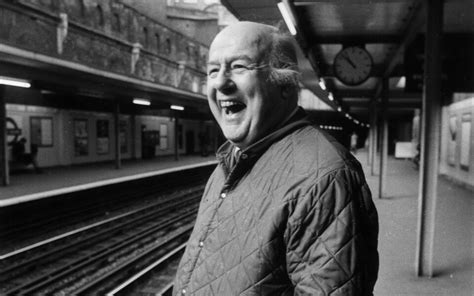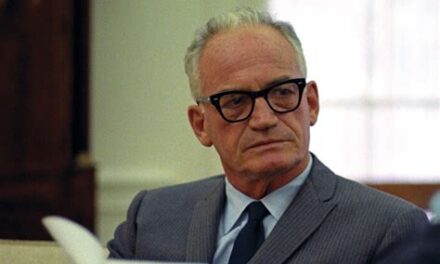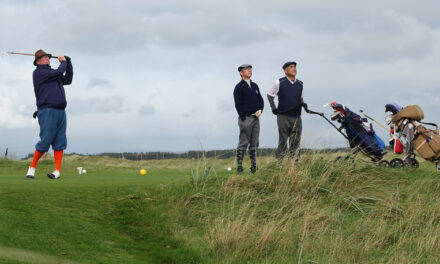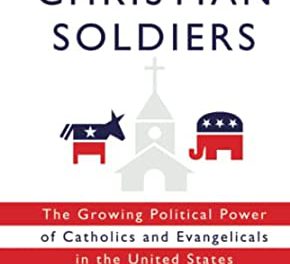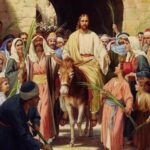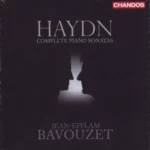On the rare occasions that I mention Sir John Betjeman (1906-1984) to my students, they don’t know whom I’m talking about, and I can’t help wondering that if I took a sampling of British university students, I would find similar ignorance. I think not.
In Britain, where he was born and spent his life, Betjeman was by the end of his seventy-eight years one of the most celebrated of men. An old joke about Malcolm Muggeridge went like this: A poll has been taken, and Malcolm Muggeridge is the most well-known person in Britain. Second place? The Queen. Betjeman occupied a place in the British mind and imagination almost as great as Muggeridge’s. Both men were broadcasters but different from each other.
Where Muggeridge, before he became St. Mugg, skewered public figures on television with barbed wit, Betjeman sojourned from town to town, district to district, surveying primarily the state of architecture and the manner in which places had become what they were: how buildings, streets, and blocks lift up or weigh down; how men, women, and children live, work, and worship in them; how edifice and landscape live with each other at peace or in war.
Betjeman was not an expert. He went to Magdalen College, Oxford (a city he dearly loved) in the twenties, and found himself under the unfortunate tutelage of a man who saw nothing in him, the pre-Christian C. S. Lewis. Although other tutors, such as Maurice Bowra, detected great promise in him, Betjeman, to make a long story short, was sent down and never forgave Lewis. But disappointed as he was, he found himself forced into a life of journalism and soon on the staff of the Architectural Review where he discovered his love for what men build.
By the mid-thirties he was broadcasting for the BBC, traveling the country, and also producing “Shell Guides” to houses and towns. A valuable sampling of his radio talks is collected in the volume Trains and Buttered Toast, a title that of itself gives a hint of the way Betjeman sifted the particulars of the world he saw around him for little gems that make life worthwhile. I can offer only a brief sampling, but take these comments on Bournemouth as representative of his perspective:
“The popularity of Bournemouth came with the popularity of pines and Scottish scenery. Two hundred years ago, Scotland and moors and heaths were considered rude and ugly. Then Sir Walter Scott started the craze for them; Landseer painted them later. Queen Victoria went to Balmoral. Prince Albert loved pine trees. Loyal Victorians, backed by literature and art as well as royalty, started to love them too. They saw in Bournemouth a place with all the romantic pine-clad, heath-covered verdure of Scotland but without so much of Scotland’s cold and rain. No wonder they filled it with houses. But they did it carefully.”
I hope connoisseurs of good writing have noted the virtues of those sentences: simple, direct, and concrete—concrete as one Churchill’s speeches. Also, they are historically informative with the necessary whens, wheres, and whys—and that monitory how (“carefully”). Indeed, before the essay is over, the danger of modern practice is broached: “But Bournemouth will cut its own throat if it allows its outer suburbs go on developing as they do—treeless and uncontrolled. The speculator seems to have kept within the limited number of houses to the acre but not to have bothered about anything else.” Betjeman argued conservatively, “Plan, preserve, plan—before it is too late and the speculator has ruined the whole south coast of England.”
Later in his career when he’d moved primarily to television, he directed his mild, witty ire as much at the city planners who were ruining so many skylines, neighborhoods, and historic cities. His assessment of the beauty and blight of Bath are well worth one’s time and can be viewed here.
And he loved churches, an affection that had its roots in his own tenaciously held Anglicanism. It would be easy enough for an amateur to step into Salisbury, Wells, and Canterbury cathedrals to hold forth more or less sagely on their delights. Betjeman certainly could. But more often he sought out the neglected churches, frequently the products of the Victorian age—lovely buildings, which, as it turns out until he campaigned for their preservation, were being demolished along with other structures from that era at an alarming rate.
His documentary “A Passion for Churches” (seen here ) provides more than a glimpse of how deeply he valued the spaces sensitive engineers and later architects had erected for worship.
A man who contributed as much as Betjeman did to his country’s taste for what was visually beautiful and fitting would probably be remembered and possibly celebrated by succeeding generations for that alone. The BBC was wise enough to air a series of programs about him on the centenary of his birth in 2006.
Yet Betjeman did more than draw British eyes to the buildings around them. To thousands upon thousands, he was first and foremost a poet, the Poet Laureate from 1972 to his death, and the most widely read of his time, with his Collected Poems selling two million copies.
Students often tell me they don’t like poetry. I think they kid themselves. From the nursery, we love song, meter, and rhyme, and it’s just these qualities that make Betjeman’s work so accessible. Many of the poems are wistful, almost elegiac, such as “Trebetherick,” which pays tribute to the Cornwall he loved and where he died:
Then roller into roller curled
And thundered down the rocky bay,
And we were in a water world
Of rain and blizzard, sea and spray,
And one against the other hurled
We struggled round to Greenaway.
Blesséd be St. Enodoc, blesséd be the wave,
Blesséd be the springy turf, we pray, pray to thee,
Ask for our children all happy days you gave
To Ralph, Vasey, Alistair, Biddy, John and me.
At other times he composes bitter, discordant notes, as one might expect from the critic of modern ugliness. Take these lines from “Inexpensive Progress”:
When all our roads are lighted
By concrete monsters sited
Like gallows overhead,
Bathed in the yellow vomit
Each monster belches from it,
We’ll know that we are dead.
Yet it was his faith, sometimes shaky, that buoyed him up, described so well in “Christmas”:
No love that in a family dwells,
No caroling in frosty air,
Nor all the steeple-shaking bells
Can with this single Truth compare—
That God was man in Palestine
And lives today in Bread and Wine.
Late in a life that would end after years of Parkinson’s disease, he anticipated visitors to his grave with a sense of humor:
Beneath the flowing Cornish sky
In Enodoc’s snug arms I lie.
At rest below the trampled grass
Where Pentax-bearing trippers pass
And as the simple stone they see,
Say, “Betjeman, now who was he?”
Those of us who can answer that question may consider ourselves lucky or, more to the point, blessed.

